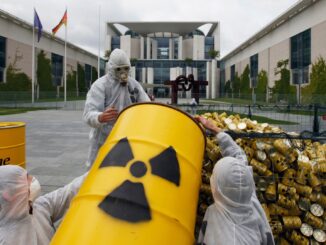
May 4, 2023
Data source: U.S. Energy Information Administration, 2020 Residential Energy Consumption Survey (RECS)
Note: Average temperature derived from National Oceanic and Atmospheric Administration (NOAA) weather data for RECS sampled households.
U.S. households consumed an average of 76.7 million British thermal units (MMBtu) of site energy in 2020, according to our 2020 Residential Energy Consumption Survey (RECS) data. The average site energy a household uses is largely correlated with the average outdoor temperature; households in colder climates, where space heating equipment is used more intensely, tend to consume more site energy than households in warmer parts of the county. Of the 15 states with average annual temperatures above the national average (59.4?F), the average households in every state except Oklahoma used less energy than the national average.
Site energy refers to the amount of energy that enters a home, including electricity from the grid, electricity from onsite solar panels, natural gas, propane, and fuel oil. Site energy includes different forms of energy, and with respect to electricity, it does not account for the losses associated with conversion of primary fuels to electricity or the electrical losses in the transmission and distribution system. Site energy consumption is a combination of the energy consumption from all energy end uses in a home, including seasonal end uses such as space heating and cooling, as well as non-seasonal end uses such as cooking and consumer electronics. Although our analysis averages site energy consumption across a large number of homes to obtain state-level estimates, the consumption within an individual home can vary widely based on the efficiency of the heating and cooling equipment.
In 2020, Hawaii was the warmest state, using an average of 30.3 MMBtu per household. Only 6% of homes in Hawaii were heated, and just 57% of households used air-conditioning (AC) equipment. Conversely, Alaska was the coldest state, using an average of 125.1 MMBtu per household in 2020. In Alaska, 99% of homes used space-heating equipment, while only 7% of homes used AC equipment.
Although site energy consumption is determined by many factors, including varying household behaviors, building construction, and the efficiencies of heating and cooling equipment, space heating and cooling as used in the United States leads to a correlation between average site energy consumption and average temperature.
In 2020, the average energy expenditures, or the amount of money a household spent on site energy, was affected by several factors beyond temperature, such as the type of energy used. Households in North Dakota (the second-coldest state) used an average of 94.3 MMBtu in 2020, nearly twice as much as homes in Florida (the second-warmest state), at 50.3 MMBtu. However, the average energy expenditures were about the same for homes in both states–$1,648 in North Dakota and $1,654 in Florida–in part because more than three-quarters of households in Florida reported that they only use electricity in their homes and U.S. average residential electricity prices are more than three times higher than residential natural gas prices.
Data source: U.S. Energy Information Administration, 2020 Residential Energy Consumption Survey
The 2020 RECS study collected energy-use data for 18,496 households, which is the largest sample in the program’s history. For the first time in RECS program history, these data are available at the state level for all 50 states and the District of Columbia. We recently released tables detailing total consumption, total expenditures, and energy intensities at the national, regional, and state levels. Many end uses of energy are seasonal or temperature dependent. We will release separate energy end-use estimates from the 2020 RECS later this spring.
Principal contributors: Greg Lawson, Mickey Francis
U.S. households consumed an average of 76.7 million British thermal units (MMBtu) of site energy in 2020, according to our 2020 Residential Energy Consumption Survey (RECS) data. The average site energy a household uses is largely correlated with the average outdoor temperature; households in colder climates, where space heating equipment is used more intensely, tend to consume more site energy than households in warmer parts of the county. Of the 15 states with average annual temperatures above the national average (59.4?F), the average households in every state except Oklahoma used less energy than the national average.



